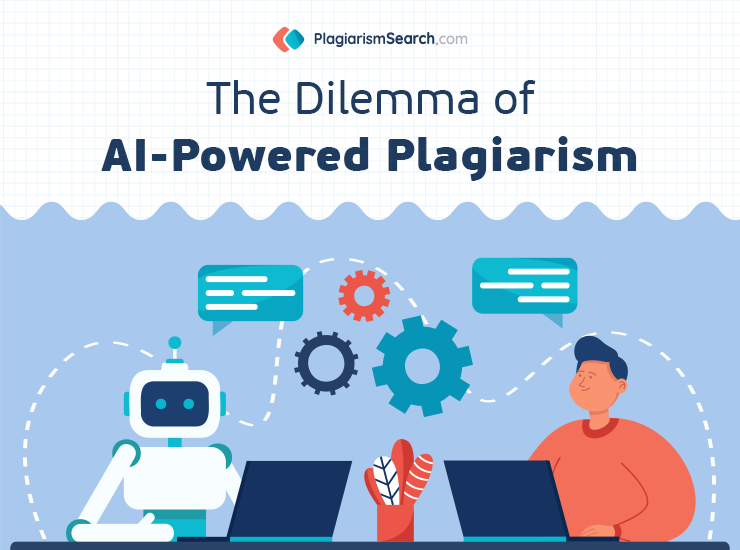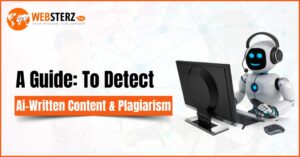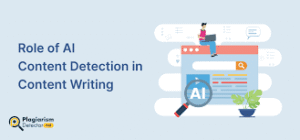How to Check Plagiarism in AI-Written Content
Artificial Intelligence (AI) has transformed the way we create content, making it faster, easier, and more efficient. Tools like ChatGPT, Jasper AI, and Writesonic are now helping bloggers, students, marketers, and businesses produce content in minutes.
However, there’s a major concern — plagiarism. While AI tools are designed to generate original text, they are trained on massive datasets from the internet. Sometimes, they can produce sentences or paragraphs similar to existing online content. This raises an important question: How do you ensure that AI-written content is plagiarism-free?
In this guide, we’ll explore:
-
Why plagiarism happens in AI-written content
-
How plagiarism can impact your credibility
-
The best tools to detect plagiarism
-
Step-by-step tips for checking AI-generated work
-
How to keep your AI content 100% original
Why AI-Written Content Might Contain Plagiarism
Even though AI models do not “copy-paste” directly, plagiarism can occur unintentionally due to:
-
Training Data Overlap
AI learns patterns from existing content. Sometimes, it produces output that closely matches its training examples. -
Common Phrases & Clichés
Widely used expressions like “content is king” are not unique and often appear in multiple places online. -
Prompt Influence
If you feed AI a prompt with existing text or structure, it may reuse elements of that text. -
Limited Context Understanding
AI doesn’t “know” plagiarism rules the way humans do — it simply predicts words based on patterns.
Why Plagiarism in AI Content is a Problem
-
SEO Penalties – Google may lower your rankings if your content is flagged as duplicate.
-
Legal Risks – Copyright infringement can lead to lawsuits.
-
Loss of Trust – Readers and clients expect originality; plagiarism damages credibility.
-
Academic Consequences – For students, plagiarism can result in failing grades or disciplinary action.
Best Tools to Check Plagiarism in AI-Written Content
Here are top plagiarism checkers that work well with AI-generated text:
1. Grammarly Premium
-
Highlights matched content and shows original sources.
-
Works inside documents, emails, and Google Docs.
-
Best for quick checks.
2. Copyscape
-
Industry-standard plagiarism checker for online publishers.
-
Detects both partial and full matches across the internet.
3. Turnitin
-
Popular in academia for checking essays, reports, and research papers.
-
Compares against academic databases and internet content.
4. Quetext
-
AI-powered deep search for plagiarism.
-
Color-coded results for easy review.
5. Plagscan
-
Cloud-based plagiarism detection.
-
Provides a similarity percentage score.
6. Originality.ai
-
Designed specifically for AI content detection.
-
Shows both plagiarism matches and AI-writing probability.
Step-by-Step: How to Check AI-Written Content for Plagiarism
-
Generate Your AI Content
-
Use your preferred AI writing tool to draft your article.
-
-
Run It Through a Plagiarism Checker
-
Paste the text into Grammarly, Copyscape, or any chosen tool.
-
-
Review the Results
-
Look for highlighted matches and compare them with the sources.
-
-
Edit & Paraphrase
-
Rewrite flagged sections to make them unique.
-
-
Cite Sources (If Needed)
-
If you’re using factual information, provide citations to give credit.
-
-
Re-check After Edits
-
Run the content again to confirm originality.
-
Tips to Avoid Plagiarism in AI-Written Content
-
Customize AI Output – Add your personal tone, examples, and insights.
-
Avoid Over-Reliance – Use AI as an assistant, not the sole creator.
-
Change Sentence Structures – Paraphrase to ensure uniqueness.
-
Run Multiple Checks – Different tools detect different matches.
-
Use AI Detection Tools – Combine plagiarism checks with AI content detectors.
AI Content vs. Human Content: Can Plagiarism Be Avoided Completely?
While no system is 100% perfect, you can keep plagiarism risks very low by:
-
Using AI for brainstorming and structure rather than full text generation.
-
Editing extensively before publishing.
-
Combining plagiarism detection and AI-content detection.
Remember — originality is about adding unique value to your content, not just passing plagiarism checks.
Final Thoughts
AI-written content can be a huge productivity booster, but plagiarism risks are real. The key is to check, edit, and verify before publishing. By using reliable plagiarism detection tools and applying thoughtful edits, you can confidently publish content that is both original and valuable to your audience.
Your readers, clients, or teachers will appreciate your effort — and you’ll avoid the headaches of duplicate content penalties or copyright claims.
FAQs: How to Check Plagiarism in AI-Written Content
1. Why is it important to check plagiarism in AI-written content?
AI tools can sometimes generate sentences or ideas similar to existing online sources without proper citation. Checking plagiarism ensures originality, avoids copyright infringement, and maintains credibility in your content.
2. Can AI-generated text be plagiarized?
Yes. While AI tools like ChatGPT create content based on learned patterns, they can still produce phrases or structures that closely match existing material, which might be flagged as plagiarism.
3. What are the best plagiarism checkers for AI-written content?
Some popular and reliable plagiarism tools include Grammarly, Copyscape, Quetext, Turnitin, and Plagscan. Many of these tools now detect AI-assisted writing patterns too.
4. How do I check AI-written content for plagiarism for free?
Free tools like SmallSEOTools, Duplichecker, and PlagiarismDetector.net offer basic plagiarism checks. However, for deeper scans, premium tools provide more accurate results.
5. Do plagiarism checkers detect AI writing style?
Traditional plagiarism checkers focus on matching text to existing sources. Some platforms like Turnitin and Originality.ai are also adding AI-content detection features to identify machine-generated text.
6. Should I edit AI-generated content before publishing?
Yes. Editing helps improve originality, adds your own voice, and ensures factual accuracy — reducing the chance of plagiarism and improving SEO performance.
7. Can I trust AI content to be 100% original?
No AI tool can guarantee 100% originality. Always verify using plagiarism checkers and add unique insights or examples to make the content distinct.
8. How often should I check AI-written content for plagiarism?
You should check every piece before publishing, especially if it’s for academic, professional, or SEO purposes. Even small parts can be flagged.
9. Is AI plagiarism the same as human plagiarism?
The effect is the same — both involve using someone else’s work without proper credit. However, AI plagiarism is usually unintentional, caused by the model’s pattern-based generation.
10. Can rewriting AI-generated text remove plagiarism?
Yes, rewriting with fresh phrasing, unique examples, and additional research can eliminate detected plagiarism while enhancing originality.
Quick Checklist for Checking AI-Written Content
✅ Run through a plagiarism checker
✅ Edit flagged areas
✅ Cite sources where needed
✅ Add your unique insights
✅ Recheck before publishing





